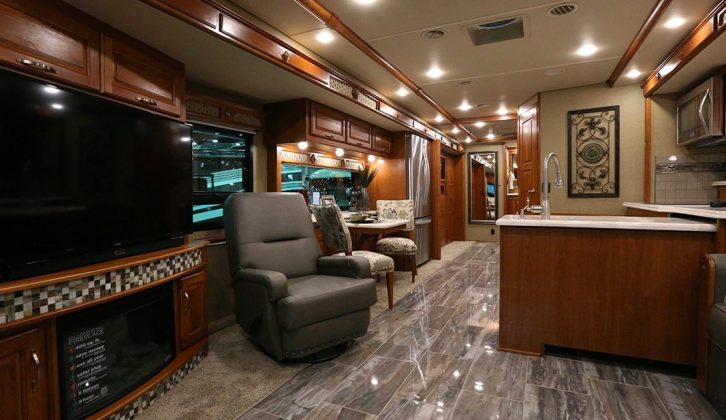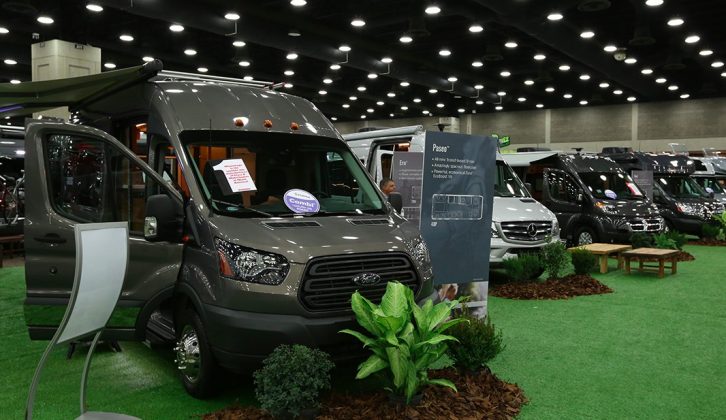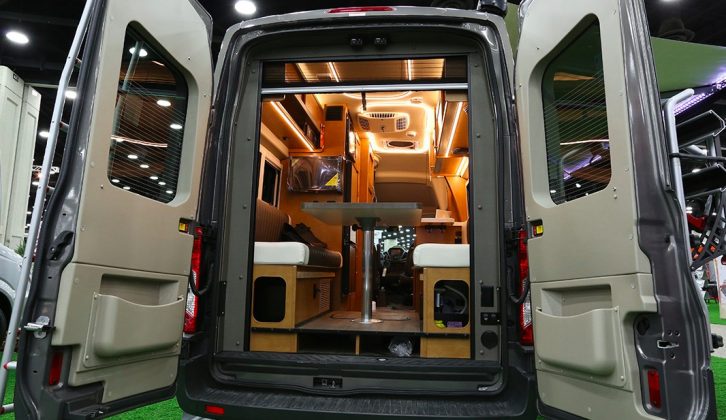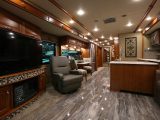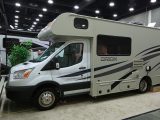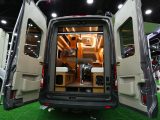A trip to America to see what motorcaravanning is like Stateisde is always an eye-opener. And this visit was no exception.
Last week’s annual RVIA show took place at the Kentucky Exposition Center in Louisville, against a backdrop of eight years of successive growth in the market. The Recreational Vehicle Industry of America’s national RV trade show, to use its full title, is the American equivalent of what takes place at the NEC and in Düsseldorf.
Unlike the British and German events, though, the Louisville show isn’t for the public. Instead, it’s where RV manufacturers (this segment includes travel trailers, toy haulers and motorhomes) and equipment suppliers come together to showcase their wares, to dealers and distributors across North America and beyond.
We saw many familiar Continental brands showcasing their products in Louisville. Among these was leading UK accessories producer Milenco, having taken stand space alongside suppliers from across the globe, who once again very kindly invited Practical Motorhome to Louisville.
Another world
For many Brits, American motorhomes are objects of bewilderment – overblown and uneconomical-to-run vehicles that aren’t a good fit for the narrow and winding roads of Europe.
Their homely interiors, which can lean towards chunky cabinetwork, chintzy soft furnishings and oversized appliances, are at odds with the contemporary visual grammar of Continental-produced motorhomes, where most buyers are happy with boutique hotel-style minimalism and subtle surface finishes.
But many of the innovations one sees at Louisville mirror those adopted on this side of the pond. All-in-one service hatches were particularly prevalent at last week’s show. As in Europe, these allow users easy access to habitation services like electrical and water equipment, although in the US the capacities and quantities involved can often be bigger.
Slide-outs are another ubiquitous feature of American RVs, of course. Utilised to increase the interior living space once pitched, in Blighty slide-outs have so far only found favour with smaller converters including IH Motorhomes and Moto-Trek. In the US, though, slide-outs feature right across the motorhome market, from van conversions to luxury liners – presumably driven by the warm and dry climate of many states.
In America, of course, they don’t do things by halves. Indeed, the impressive Winnebago Journey 40J (approximately $340,000) sports slide-outs on both sides – with the one on our nearside running for the whole length of the vehicle. It allows the living room, kitchen and master bedroom to be grown massively at the touch of a button.
Outside entertainment
On our last visit to Louisville two years ago, we reported on another trend much in evidence at the RVIA show. This was the siting of equipment on the outside of the vehicle to facilitate ‘tailgating’ – a popular pastime in the US, and far from the familiar definition of the word.
Tailgating refers to the American fondness for partying outside. RVers congregate on campgrounds or in car parks, and lift flaps on the sides of their vehicles to reveal exterior kitchen stations, with an adjacent flatscreen TV concealed under another flap and large enough for gathering around to watch live ‘sports’. It’s all about the shared experience, alongside beer, burgers and hot dogs.
Could this catch on over here? We don’t think so, as our cooler and wetter weather would put a dampener on such merriment. And it’s hard to imagine even the most progressive of campsite owners sanctioning such raucous on-pitch behaviour. As for getting through UK car park height barriers in a US motorhome…
So did we spot another cool design-led way of enjoying RVing that could become another trend? We didn’t find one, although one coach-style motorhome with a helipad on its roof – replete with stealth chopper – came close. Sadly, it turned out to be a hospitality vehicle.
Transit takeover!
But one of the biggest developments we noticed at the Louisville show was the arrival of the Ford Transit as a base vehicle. We spotted the eighth-generation Tranny underpinning ’vans by the likes of major brands Winnebago and Coachmen, in different forms.
Winnebago offers the Paseo, a B-class (van conversion), alongside the Fuse, a C-class (overcab). Coachmen offers similar flavours, via its Crossfire and Orion models.
Although the US versions of the Transit looked identical to our eyes, it’s under the hood where the differences start to emerge: the US Ford Transit typically comes with a 3.7-litre V6 producing 275bhp, although a 3.7-litre EcoBoost V6 and 3.2-litre turbodiesel are also available.
And American drivers don’t have to make do with a six-speed stick-shift’n’clutch pedal combo. American Transits come with automatic gearboxes including overdrive to make short work of long slogs on the freeway.
We hear that automatic transmissions for European Transits will land early next year. However, with petrol prices just under three times that of the US, we can probably survive without those V6 lumps for now!
The US Ford Transit typically comes with a 3.7-litre V6 producing 275bhp!



